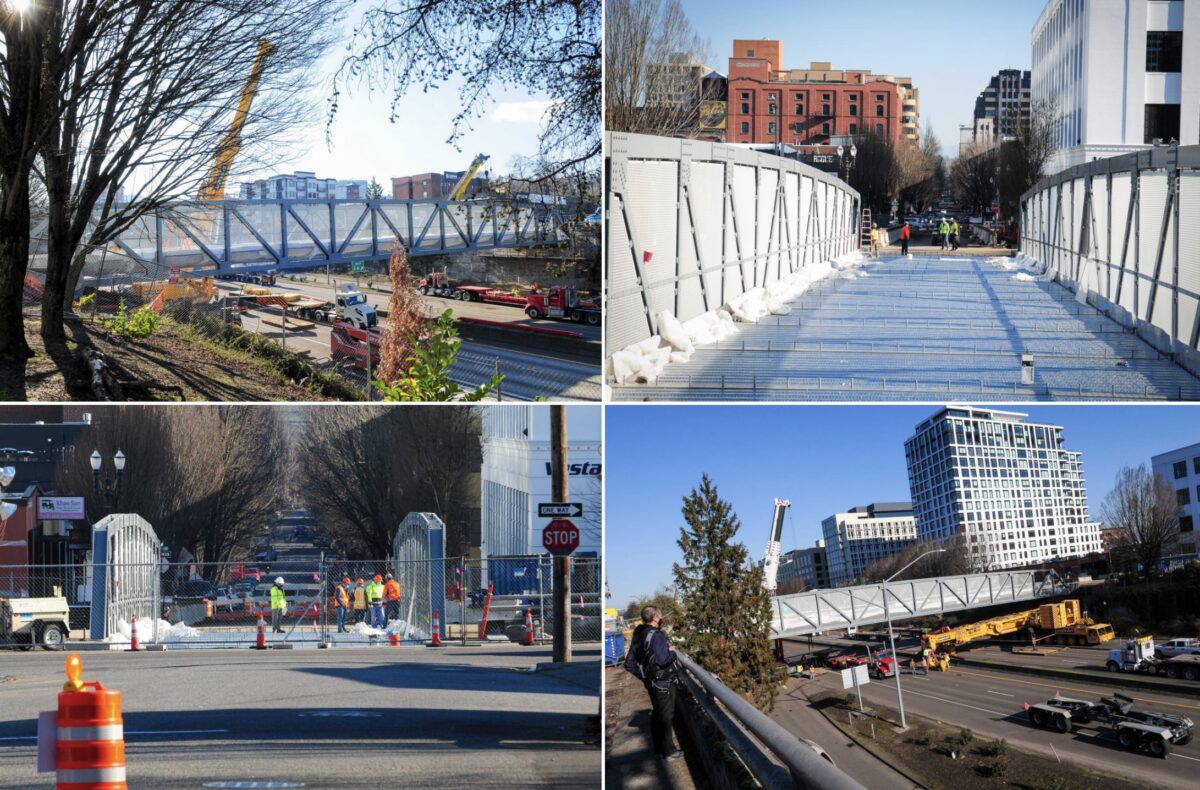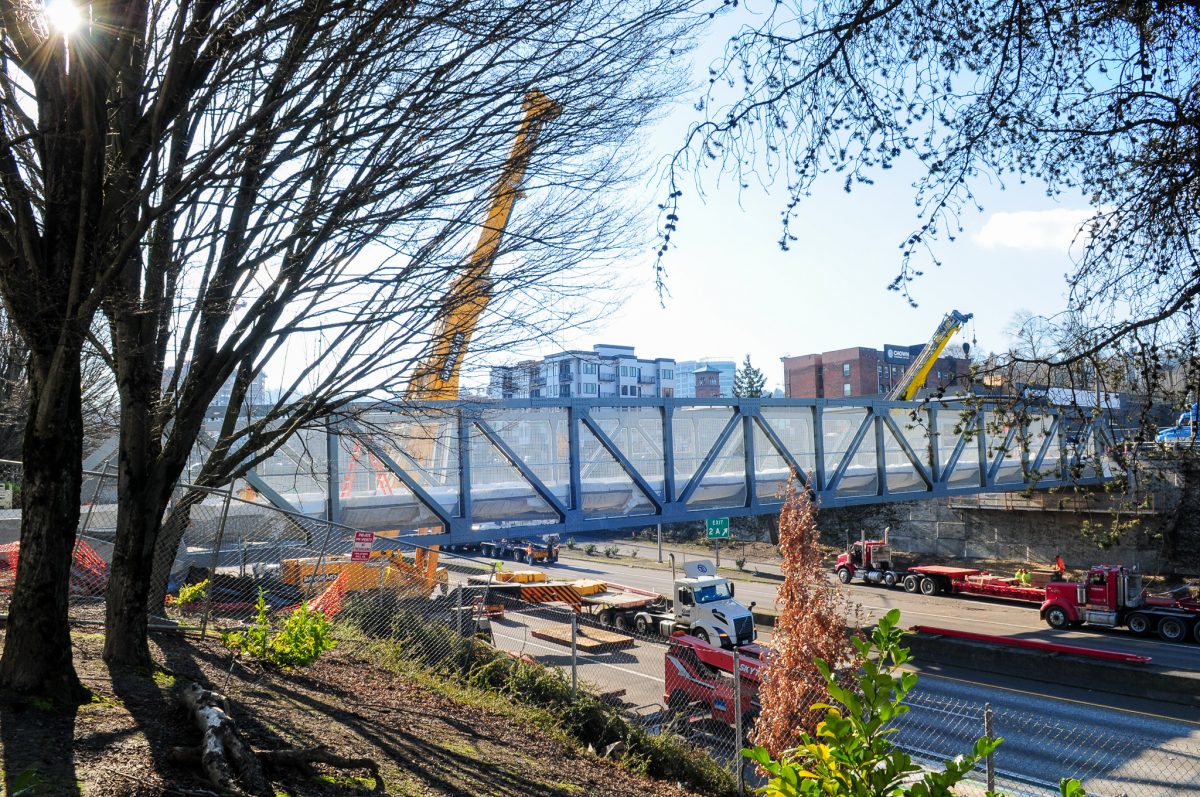



The missing piece to a major bikeway in downtown Portland that has been over 15 years in the making was lowered into place this morning. Just after 7:00 am Saturday crews with Wildish Construction (the same company that build the Gibbs Pedestrian Bridge under the Aerial Tram) operating two massive cranes lifted the 355,000 pound, 200-foot long Flanders Crossing Bridge into its place across Interstate 405.
It was a perfectly clear and sunny day, a good omen for the future.
Flanders Crossing is the pièce de résistance of the “Flanders Bike Boulevard” first promised to Portlanders in 2005 (see below). Now referred to as the Flanders Neighborhood Greenway project, the vision is to create a low-stress, east-west connection between the Willamette River and NW 24th Avenue where bicycle users, walkers, and rollers of all types have priority. That vision has been on hold in large part because of the gap in the route at I-405.

Advertisement


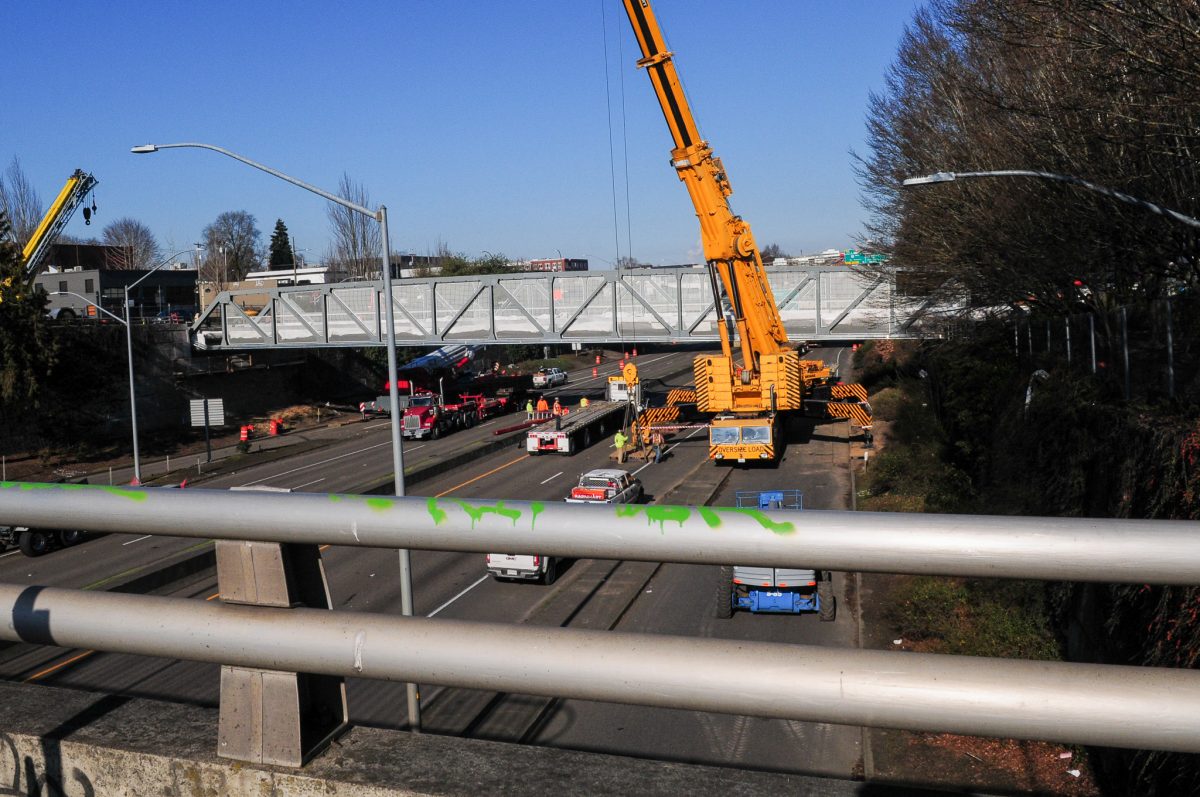
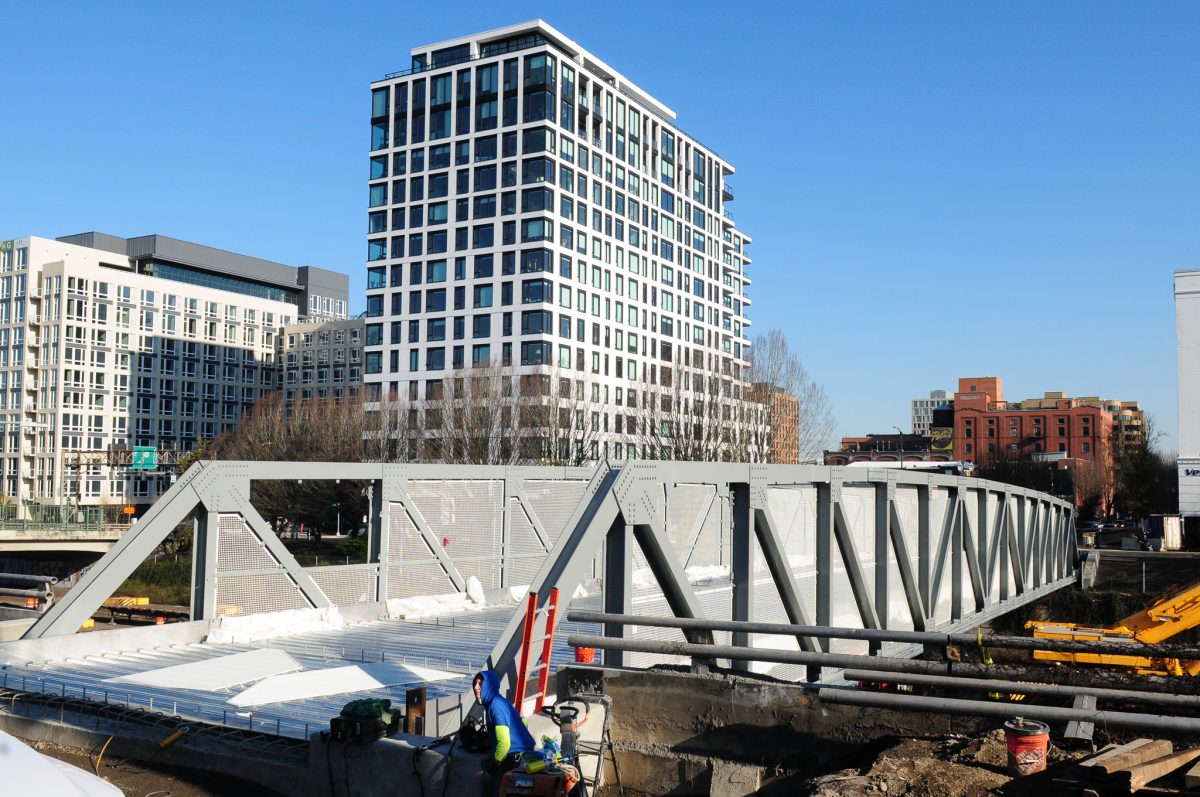
With the bridge in place, the bikeway has been born and in about eight weeks we’ll start to see the vision become a reality. Once the bridge and bikeway are complete, Flanders will (hopefully!) become something that’s much too rare in Portland: A dense street full of commercial destination where bicycle riders feel safe and welcome.
At the site today many people gathered to catch a glimpse of the historic installation. We hoped to see it get moved across the interstate, but crews got a much earlier start than expected and the span was mostly in place before 7:30 am. Luckily Anna Bjornberg (with Go By Bike) was there to grab a few photos of the action (below).
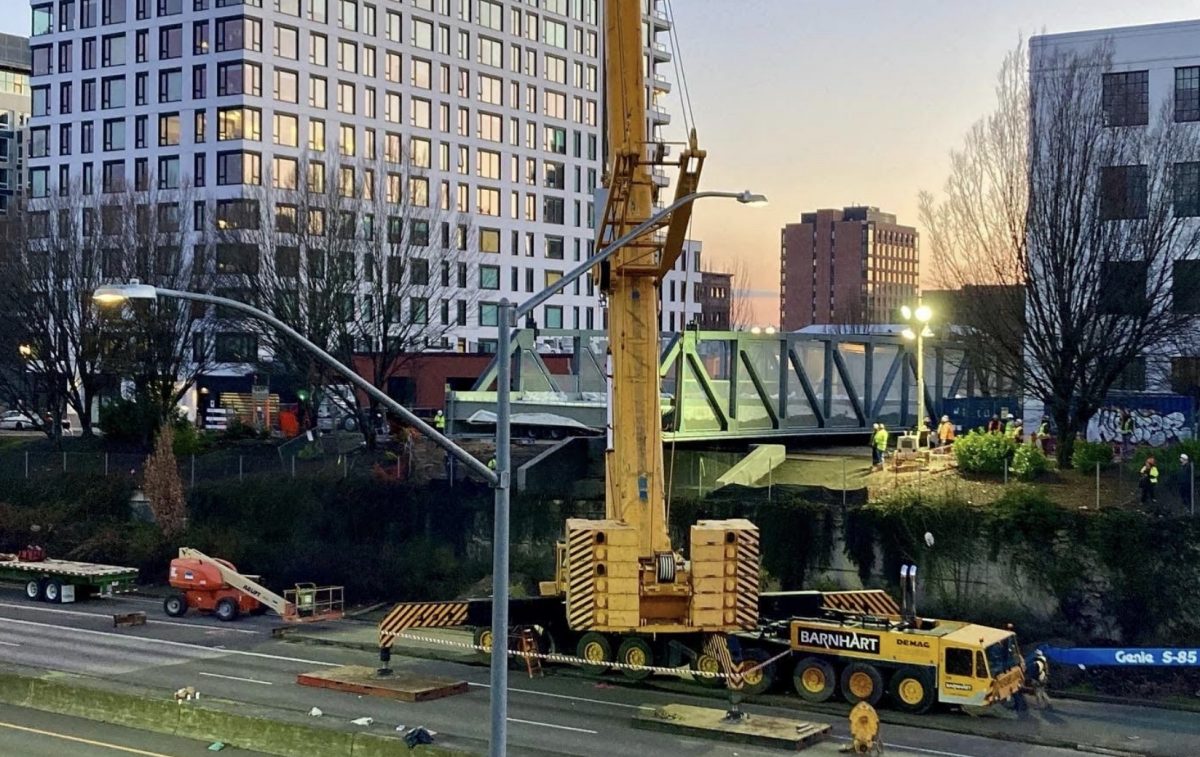

One nearby resident named Geoff who was walking by with his young daughter on roller skates was thrilled to see it in place. “Any time we want to get into the Pearl or get to Powell’s or Whole Foods, we had to go a few blocks out of the way. So this will be a game changer.”
Not only is this bridge the key to the Flanders bikeway, it’s also going to be much safer and more pleasant than any other option. Glisan and Everett (streets one block in each direction) are both very high-stress for walking and biking and lack adequate space and protection for non-drivers. “The only other option is Burnside which is problematic,” Geoff shared. “Or Johnson and sometimes it’s sketchy down there.” His daughter is excited too. “It looks cool. It looks skatable,” she said, with a big smile.
Advertisement
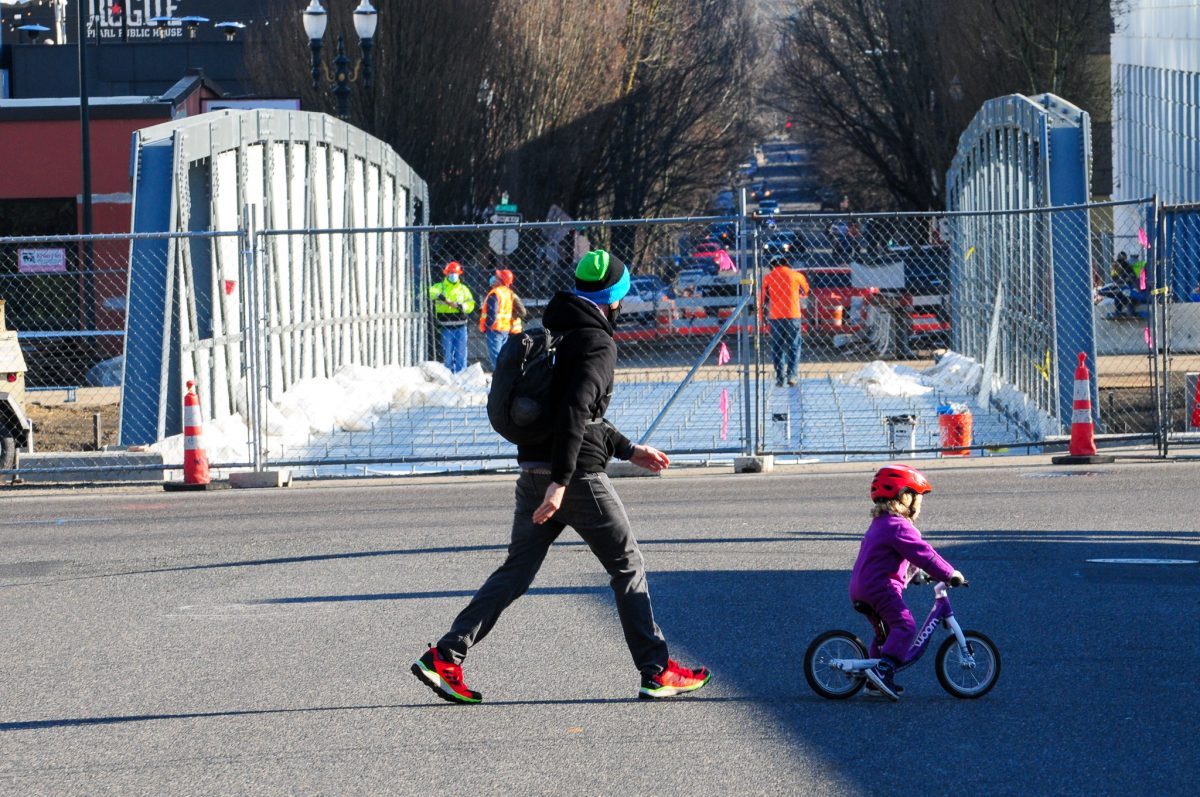
Another couple I spoke to was less enthusiastic. “This is a total waste of money,” a man said (he didn’t share his name). “There are homeless people everywhere, we should have used this money to build a condo to put them in! This is why Trump gets elected because people see liberal cities doing stuff like this!” A woman he was with was also peeved by what she saw. “Is this really necessary?” she wondered. “I mean, I don’t see a lot of bikers around here.” After I offered some different perspectives, their views softened. “Well, I’m sure we’ll use it. It’s probably for the best,” the man said, calming down a bit.
The bridge deck is 24-feet wide and the sides are covered with a steel mesh. In person the mesh looks a lot less transparent than PBOT’s concept drawings, but a great view from the bridge is still likely. Still to come is concrete for the bridge deck and new traffic signals and crossing updates on both ends. On the east side of the bridge, a signal will be installed at NW 14th (at 10 Barrel Brewing) and there will be a new four-way stop sign at 15th. On the west side, a new signal is coming to 16th. The cost of the bridge is $9.5 million paid for through a combination of an Oregon State Lottery grant (via the Connect Oregon program) and Transportation System Development Charges (TSDCs).
Once everything’s in place, figures from the city’s state grant application say bridge crossings will reach over 9,000 per day — that’s more than the Hawthorne Bridge and five times the daily bike ridership of the Tilikum Crossing bridge. By 2035, the number of daily crossings are projected to climb to 11,600.
With a late March opening planned, the Portland Bureau of Transportation is eager to have everything in place to capitalize on all the excitement. This high-profile piece of infrastructure will help rescue our brand as a leading transportation city. It also has the potential to spur economic activity and build community bonds as a Covid-safe place for people to be outside, together, in the heart of Portland.
For a city in dire need of an injection of hope and good news, this bridge will carry more than just people. It’s a powerful symbol that despite everything, Portland can still accomplish big things.
“That’s just so great,” said one woman to her friend as she walked by today. “Yeah,” her friend replied. “Sometimes this city actually does work.”
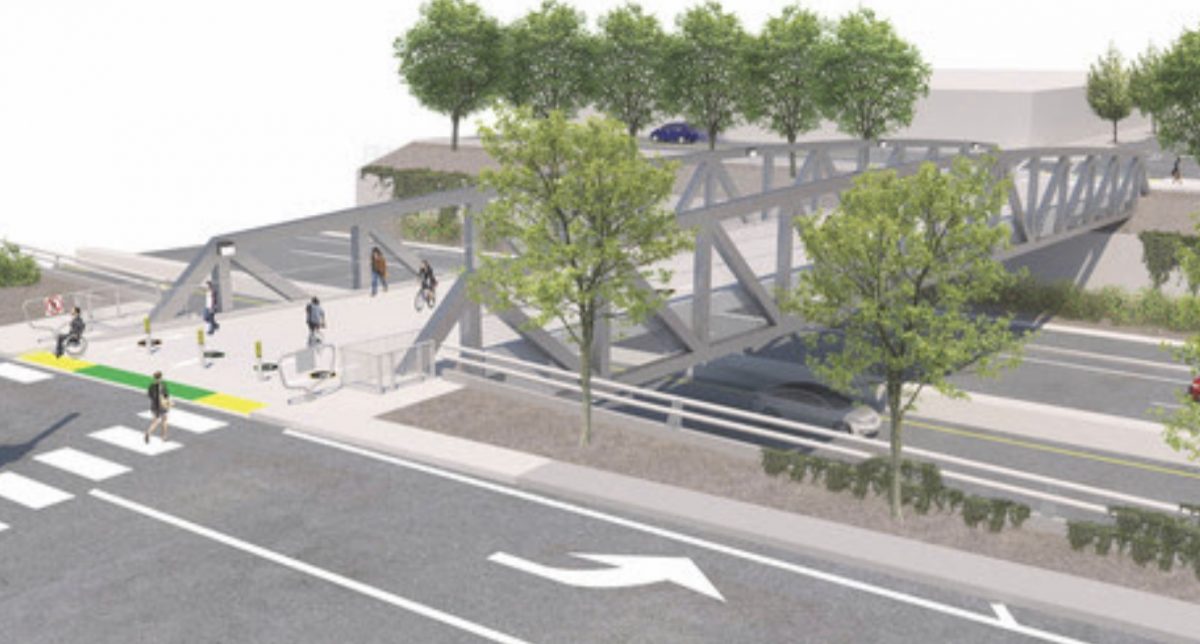

— Jonathan Maus: (503) 706-8804, @jonathan_maus on Twitter and jonathan@bikeportland.org
— Get our headlines delivered to your inbox.
— Support this independent community media outlet with a one-time contribution or monthly subscription.
